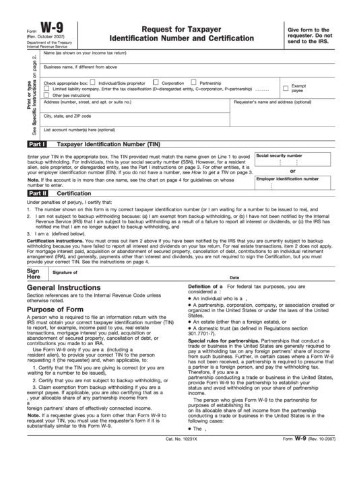
SE is an important measure of a company’s financial health because it represents the funds available to creditors and investors in the event of a liquidation. The SCF shows how a company’s cash and cash equivalents have changed over time. The SCF can be used to determine a company’s ability to pay dividends, repay debt, and make other investments.

They represent returns on total stockholders’ equity reinvested back into the company. Stockholders’ equity is an effective metric for determining the net worth of a company, but it should be used in tandem with analysis of all financial statements, including the balance sheet, income statement, and cash flow statement. For this reason, many investors view companies with negative shareholder equity as risky or unsafe investments. The statement of shareholders’ equity is also known as the statement of stockholders’ equity or the statement of equity. As noted above, shareholder equity represents the total amount of capital in a company that is directly linked to its owners. That means it is the total amount of money the owners have invested in it.

How to calculate a shareholder equity?
This is cause for concern because it tells you the value of a business after investors and stockholders are paid out. A statement of shareholders’ equity details the changes within the equity section of the balance sheet over a designated period of time. The report provides additional information to readers of the financial statements regarding equity-related activity during a reporting period. The statement is particularly useful for revealing stock sales and repurchases by the reporting entity; a publicly-held company in particular may engage in these activities on an ongoing basis.

- The book value per share is calculated by dividing the company’s total liabilities and shareholders’ equity by the number of shares outstanding.
- At some point, accumulated retained earnings may exceed the amount of contributed equity capital and can eventually grow to be the main source of stockholders’ equity.
- They can directly see, on their balance sheet, if their numbers are on the right track.
Stockholders’ equity, also referred to as shareholders’ or owners’ equity, is the remaining amount of assets available to shareholders after all liabilities have been paid. It is calculated either as a firm’s total assets less its total liabilities or alternatively as the sum of share capital and retained earnings less treasury shares. Stockholders’ equity might include common stock, paid-in capital, retained earnings, and treasury stock. Financial Statements are an important source of information for external stakeholders as well as for general shareholders.
Why is a statement of shareholder equity important?
Conceptually, stockholders’ equity is useful as a means of judging the funds retained within a business. If this figure is negative, it may indicate an oncoming bankruptcy for that business, particularly if there exists a large debt liability as well. There will be grand total figures at the top and bottom of the matrix for the total amount of beginning and ending shareholders’ equity. Stockholders’ equity is also the corporation’s total book value (which is different from the corporation’s worth or market value). It is reserved for reinvestment, for the purpose of capital, capital expenditure and debts. Harold Averkamp (CPA, MBA) has worked as a university accounting instructor, accountant, and consultant for more than 25 years.
- Retained earnings are part of shareholder equity and are the percentage of net earnings not paid to shareholders as dividends.
- The heading on the statement of shareholder equity should have the company name, the title of the statement, and the accounting period to prevent any confusion later when you are searching for these financial statements.
- Stockholders’ equity is often referred to as the book value of the company and it comes from two main sources.
- Current assets can be converted to cash within a year, such as cash, accounts receivable, inventory among others.
- Preferred stocks, also known as preferred shares, are the stock shares paid in dividend to the shareholders.
- As noted above, shareholder equity represents the total amount of capital in a company that is directly linked to its owners.
- Stockholders’ equity, also referred to as shareholders’ or owners’ equity, is the remaining amount of assets available to shareholders after all liabilities have been paid.
When you take all of the company’s assets and subtract the liabilities, what remains is the equity. For a company with stock shares, the equity is owned by the stockholders. The statement of equity is simply the part of a balance sheet or ledger that clearly calculates and explains the stockholders’ (or shareholders’) equity.
Example of Shareholders Equity Statement
The statement of shareholders’ equity includes information about the company’s beginning shareholders’ equity, changes in shareholders’ equity during the reporting period, and the company’s ending shareholders’ equity. The statement of shareholders’ equity is important because it shows how a company’s equity has changed over time and can be used to help investors understand a company’s financial condition. Statement of Shareholders’ Equity is a financial statement that shows the changes in a company’s equity over a period of time. It includes the company’s beginning equity, net income (or loss), and dividends paid to shareholders. This statement is important because it shows how the company’s net worth has changed over time. Companies fund their capital purchases with equity and borrowed capital.
- The approach may apply to separate additional columns for other classes of preferred stock.
- Investors contribute their share of (paid-in) capital as stockholders, which is the basic source of total stockholders’ equity.
- The SCF can be used to determine a company’s ability to pay dividends, repay debt, and make other investments.
- Adam received his master’s in economics from The New School for Social Research and his Ph.D. from the University of Wisconsin-Madison in sociology.
- Shareholder equity alone is not a definitive indicator of a company’s financial health.
- SE is an important measure of a company’s financial health because it represents the funds available to creditors and investors in the event of a liquidation.
- As shareholders also have a share in the success of a company, it represents the business success as well as theirs.
This equation is known as a balance sheet equation as all the relevant information can be gleaned from the balance sheet. The statement of stockholders’ equity is the difference between total assets and total liabilities, and is usually measured monthly, quarterly, or annually. It’s found on the balance sheet, which is one of three financial documents that are important to all small businesses.
What Can Shareholder Equity Tell You?
But income shouldn’t be your only focus if you want a good idea of how your operations are faring. Preferred stocks, also known as preferred shares, are the stock shares paid in dividend to the shareholders. The downside of this type of equity is that they do not have a say in any decisions taken by the company.

Since equity accounts for total assets and total liabilities, cash and cash equivalents would only represent a small piece of a company’s financial picture. This is why many investors view companies with negative shareholder equity as risky or unsafe investments. Shareholder equity alone is not a definitive indicator of a company’s financial health. If used in conjunction with other tools and metrics, the investor can accurately analyze the health of an organization. Retained earnings (RE) are a company’s net income from operations and other business activities retained by the company as additional equity capital.
Understanding Shareholder Equity (SE)
Current assets are assets that can be converted to cash within a year (e.g., cash, accounts receivable, inventory). Long-term assets are assets that cannot be converted to cash or consumed within a year (e.g. investments; property, plant, and equipment; and intangibles, such as patents). This section is important, however, because it helps business owners evaluate how their business is doing, what it’s worth, and what Statement Of Shareholders Equity Definition are good investments, he said. Companies may return a portion of stockholders’ equity back to stockholders when unable to adequately allocate equity capital in ways that produce desired profits. This reverse capital exchange between a company and its stockholders is known as share buybacks. Shares bought back by companies become treasury shares, and their dollar value is noted in the treasury stock contra account.
Companies may have bonds payable, leases, and pension obligations under this category. The value of $65.339 billion in shareholders’ equity represents the amount left for stockholders if Apple liquidated all of its assets and paid off all of its liabilities. Looking at the same period one year earlier, we can see that the year-on-year https://kelleysbookkeeping.com/aci-payments-inc/ change in equity was a decrease of $25.15 billion. The balance sheet shows this decrease is due to both a reduction in assets and an increase in total liabilities. Equity, also referred to as stockholders’ or shareholders’ equity, is the corporation’s owners’ residual claim on assets after debts have been paid.

